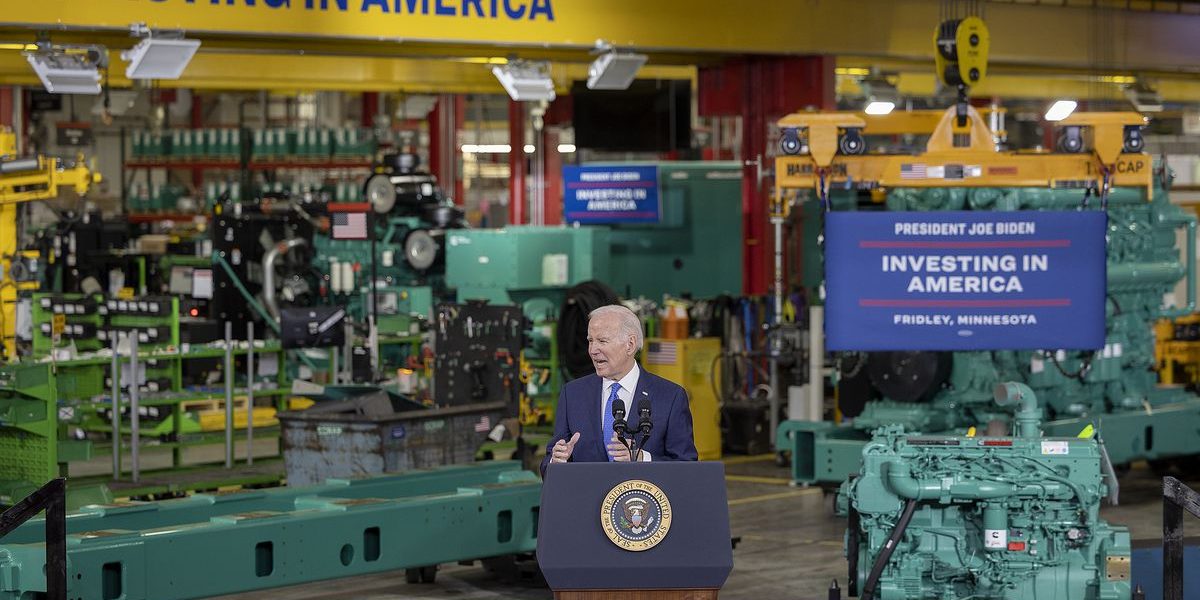SSAB, the American Exploration Institute, and the FCC-Hydrogen Industry: Proposed Interpretation of the Energy Tax Credit Proposal
SSAB’s president said that the proposal supports the company’s leadership and innovation in decarbonization of the steel industry. This clarifying language will help drive new technology investment and create clean energy jobs in the United States.”
If the guidance is too restrictive, he said, “you’ll see a much smaller, if not negligible growth in this industry and a failed opportunity to capitalize on the IRA.”
The marketplace is not ready to fulfill the requirements that have been imposed, which means that an industry that is stalling is not an industry at all.
The Fuel Cell & Hydrogen Energy Association consists of more than 100 member companies that are involved in hydrogen production, distribution and use. Frank Wolak, the association’s president, said it’s important the industry be given time to meet any provisions that are required for the top tier of the credit.
The American Exploration Institute urged the administration to foster more flexibility regarding hydrogen expansion, not less, as it said thathydrogen of all types is needed.
But Marty Durbin, the U.S. Chamber of Commerce’s senior vice president for policy, said the guidance released today “will stunt the growth of a critical industry before it has even begun” and his organization plans to advocate during the public comment process “for the flexibility needed to kickstart investment, create jobs and economic growth, and meet our decarbonization goals.”
One big industry player, at least, is on board with the proposed rules, which are similar to guidelines in the European Union. Air Products applauded the proposed rule which they said will be essential to deliver real emissions reductions, as well as creating the stimulus for broader investments across the hydrogen value chain. Air products is the largest hydrogen producer in the world.
Companies that can meet the tough new standards would be able to save up to $3 per kilo of production, thanks to the tax credit. New generators will only be available for three years after the hydrogen production facility is up and running. This is meant to ensure that hydrogen production helps add new sources of clean energy to power grids rather than sucking that resource dry. There are guidelines for when they can buy that energy. It’ll have to come from the same region in which they’re operating. And by 2028, the electricity would need to be generated within the same hour it’s used to power the electrolyzer.
The proposal was part of the Inflation Reduction Act and outlines a tiered system for determining who gets the most credits, with cleaner energy projects receiving more, and smaller, but still meaningful credits going to hydrogen producers.
Most hydrogen today is not made this way and does contribute to climate change because it is made from natural gas. About 10 million metric tons of hydrogen is currently produced in the United States each year, primarily for petroleum refining and ammonia production.
Clean Energy and the U.S. Climate Law: Implications of the Clean Energy Tax Credit, Tax Credits, and Electric Cars
“That’s equivalent to the amount of energy currently used by every plane, train, and bus in the US combined,” Energy Deputy Secretary David M. Turk said on a Thursday call with reporters.
A professor who analyzed the U.S. climate law last week said that the U.S. credit was the most generous in the world for hydrogen production.
The public will have 60 days to submit comments once the new hydrogen guideline are posted to the Federal Register, which the Treasury and Department and IRS will have to take into account before finalizing new rules.
The guidelines elicited strong reactions from clean energy advocates and industry today, some celebrating, others outraged. Some experts said new guardrails are needed to ensure that the Biden administration’s push to develop a domestic supply chain for hydrogen doesn’t inadvertently increase pollution. Meanwhile, clean energy trade groups argued that the tax credit is now too restrictive to allow clean hydrogen production to flourish.
She said the Biden administration needs to find other ways to encourage clean energy rather than focusing on hydrogen production. When the government gives incentives to electric cars, they do not have to build power generation to support them, as Bekemohammadi said.
The three requirements reflect recommendations from a Princeton-led study published earlier this year. Some tech companies including Microsoft and Google have set their own company goals for sourcing local renewable electricity and matching their purchases on an hourly basis in a similar bid to encourage clean energy growth.




